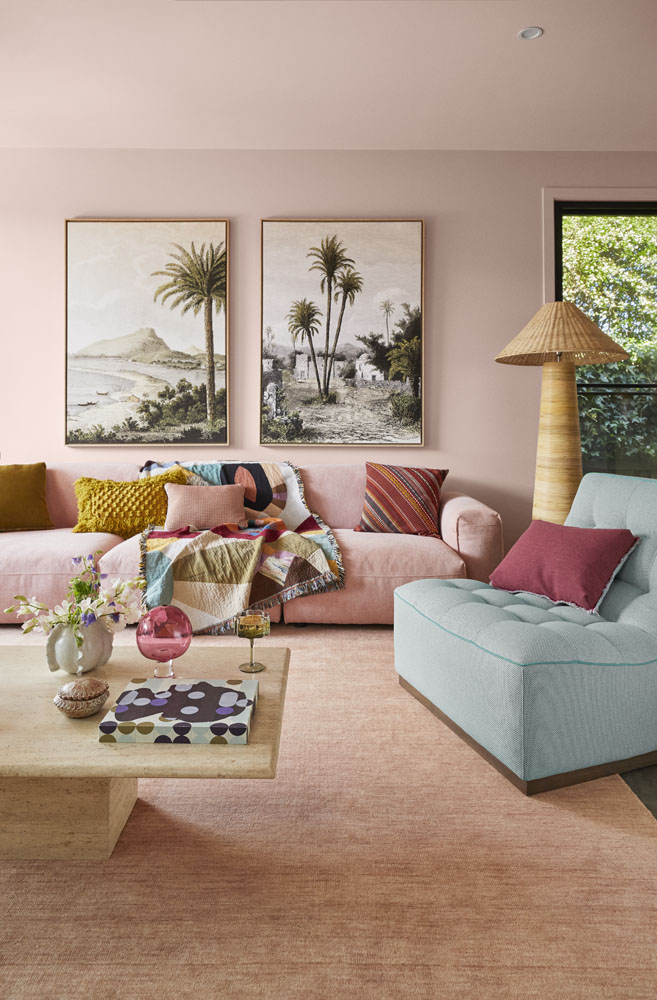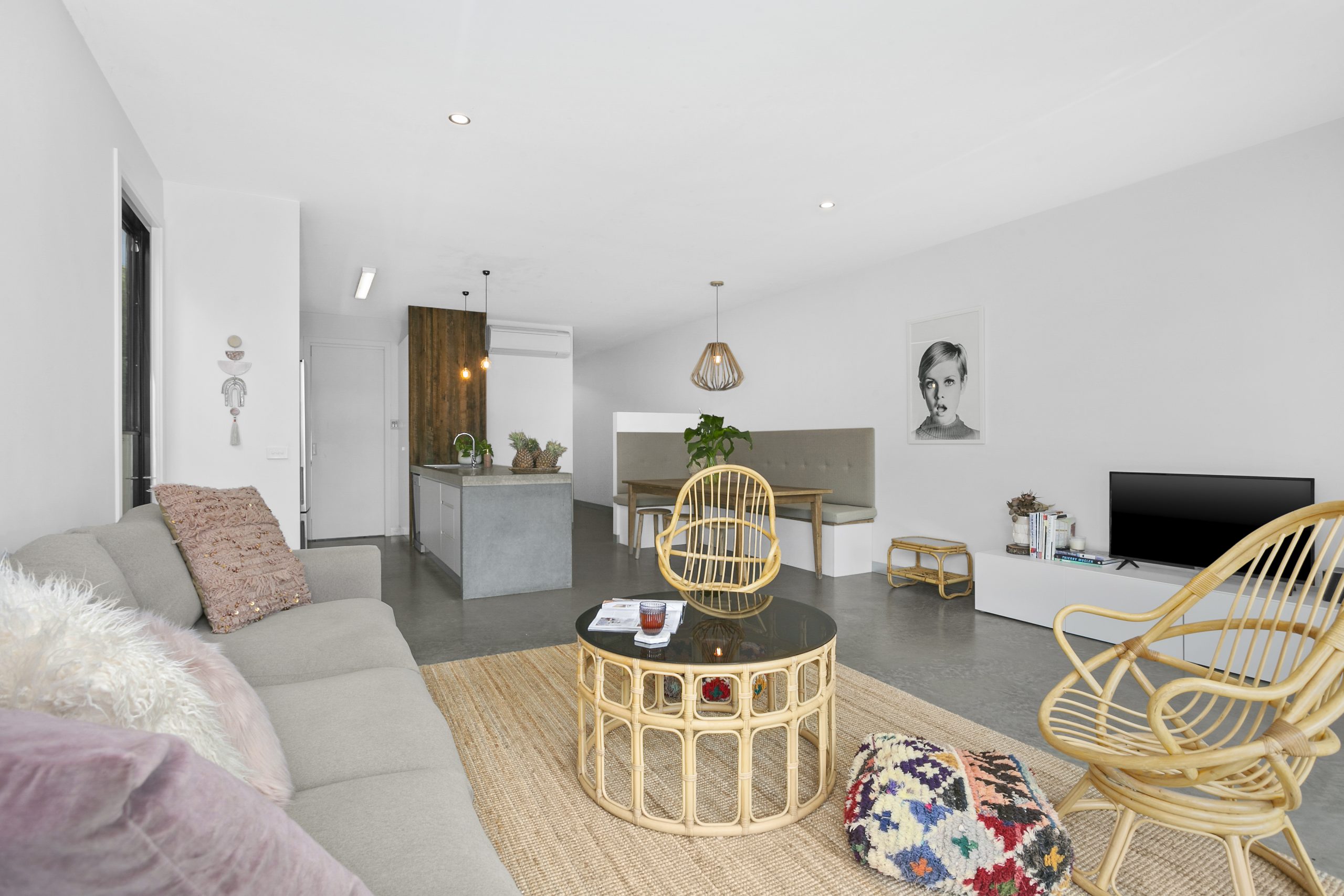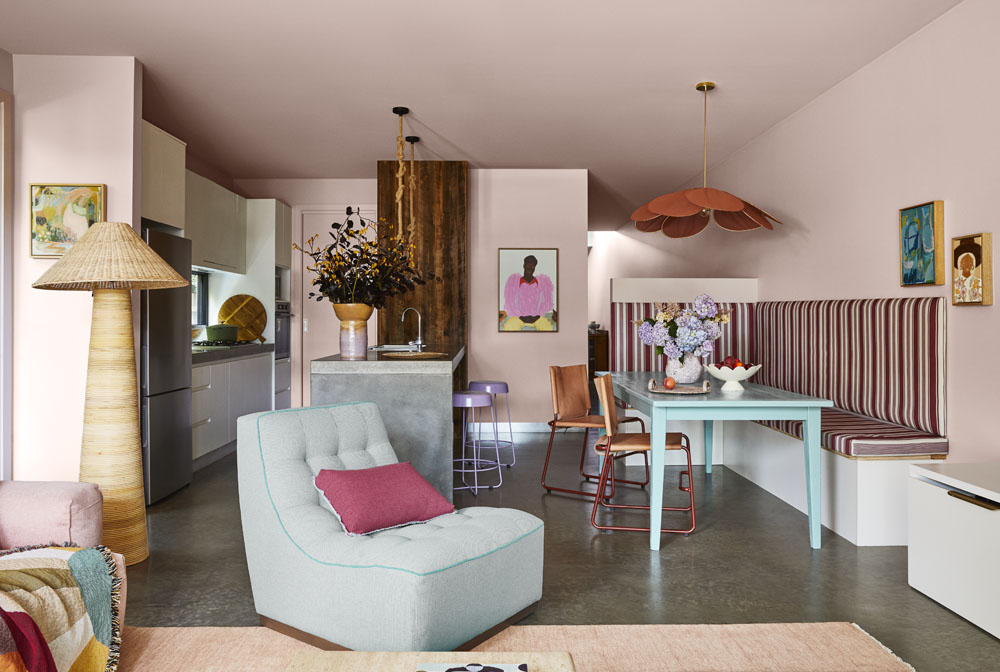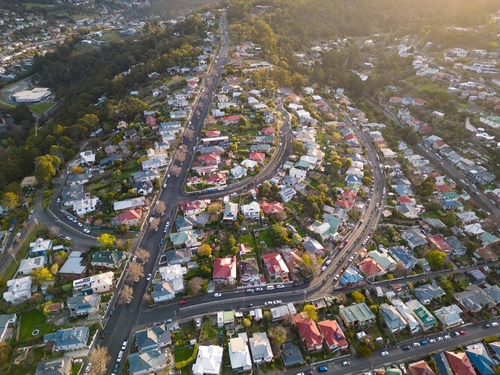The top interior design mistakes to avoid this year
A top Sydney designer walks through the common mistakes homeowners make – and how to fix them
The days of white-on-white walls are fast disappearing, as we seek comfort and relaxation at home through a warm palette of colour and texture. But how to navigate the myriad options? Starting with where we get it wrong, Julia Green of Greenhouse Interiors sets the new rules for decorating through colour, calm and a little playfulness thrown in.
Using hero colours in isolation
Julia: A common mistake I see people make is not cohesively implementing their chosen hero colour throughout the space. Look at ways to unify hero colours so they aren’t standing alone without company, instead ensuring these hues are weaved through decorative objects and furniture. The most successful designs I have seen have managed to weave colour cohesively through their home like a well-made tapestry. The more subtle the tie-in is, the better!


Using only neutral colours
Homeowners often select a neutral shade on their walls and stick to white for their ceilings and trims. The downside of this is that contrast trims on walls and ceilings can draw your eye from top to bottom, rather than allowing the eye to wander seamlessly. Instead, consider painting walls, trims and even ceilings in a single colour, to make the space feel more cohesive. That being said, contrasting pops of colour add balance which is equally important to the look and feel of any space. So, to avoid that floating feeling, ensure your room has an element of grounding through the addition of accent shades from your colour scheme through soft furnishings, textures, florals or artwork as an alternative to doors, ceilings or trims.

Incorporating colour all at once
Another mistake people make is rushing to add colour throughout their home. Don’t feel pressured to do it all at once, start small and make measured, staggered choices. For a recent makeover I worked on in the Bellarine Peninsula, the walls were painted first in a neutral, greyed off pink shade – Dulux Lilac Light, from the 2024 Dulux Colour Forecast Journey palette – before any other choices were made. The clients lived with that for a few weeks to see how the light interacted with the colour throughout the day, before we approached the rest of the space and introduced bolder pops of colour from the palette to add layering and interest.

Forgetting about mood
Colours evoke different moods, so it’s important to consider the look and feel you want to create in the space before landing on your hero colour. For example, I always opt for a calmer palette for the bedroom, as it is a place of rest. A living room on the other hand is where you spend much of your waking hours, so it’s good to liven it up! Pale pink is known for its calming effect – it’s gentle, easy to live with and can add warmth to a space, compared to an austere white shade. It’s also extremely versatile. The emotion it evokes can change completely depending on how it’s styled, which is why it’s a shade I like not only for living areas but also bedrooms.

Selecting the wrong colour
Most homeowners are apprehensive of colour or they have concerns that colour may make their home feel too bold, which is why choosing the right colour is such a critical step in the design process. Incorporating colour is such an amazing opportunity to inject your own personality and story into the home, so I encourage it wherever possible. My biggest tip is to start with a neutral shade, to create a safe base that easily allows for the introduction of other colour and styling changes over time. If you’re new to using colour in your home, start small and make measured choices. Try living with colour, even if it’s a referenced cushion or decor object. The best thing about the 2024 Dulux Colour Forecast palettes is that all of the hard work is done for you. Their carefully considered palettes are designed to take the brain strain out of companion colours that work well, so when all else fails, look to the experts who have done the hard work for you – it’s foolproof.
This stylish family home combines a classic palette and finishes with a flexible floorplan
Just 55 minutes from Sydney, make this your creative getaway located in the majestic Hawkesbury region.
As Paris makes its final preparations for the Olympic games, its residents are busy with their own—packing their suitcases, confirming their reservations, and getting out of town.
Worried about the hordes of crowds and overall chaos the Olympics could bring, Parisians are fleeing the city in droves and inundating resort cities around the country. Hotels and holiday rentals in some of France’s most popular vacation destinations—from the French Riviera in the south to the beaches of Normandy in the north—say they are expecting massive crowds this year in advance of the Olympics. The games will run from July 26-Aug. 1.
“It’s already a major holiday season for us, and beyond that, we have the Olympics,” says Stéphane Personeni, general manager of the Lily of the Valley hotel in Saint Tropez. “People began booking early this year.”
Personeni’s hotel typically has no issues filling its rooms each summer—by May of each year, the luxury hotel typically finds itself completely booked out for the months of July and August. But this year, the 53-room hotel began filling up for summer reservations in February.
“We told our regular guests that everything—hotels, apartments, villas—are going to be hard to find this summer,” Personeni says. His neighbours around Saint Tropez say they’re similarly booked up.
As of March, the online marketplace Gens de Confiance (“Trusted People”), saw a 50% increase in reservations from Parisians seeking vacation rentals outside the capital during the Olympics.
Already, August is a popular vacation time for the French. With a minimum of five weeks of vacation mandated by law, many decide to take the entire month off, renting out villas in beachside destinations for longer periods.
But beyond the typical August travel, the Olympics are having a real impact, says Bertille Marchal, a spokesperson for Gens de Confiance.
“We’ve seen nearly three times more reservations for the dates of the Olympics than the following two weeks,” Marchal says. “The increase is definitely linked to the Olympic Games.”

Getty Images
According to the site, the most sought-out vacation destinations are Morbihan and Loire-Atlantique, a seaside region in the northwest; le Var, a coastal area within the southeast of France along the Côte d’Azur; and the island of Corsica in the Mediterranean.
Meanwhile, the Olympics haven’t necessarily been a boon to foreign tourism in the country. Many tourists who might have otherwise come to France are avoiding it this year in favour of other European capitals. In Paris, demand for stays at high-end hotels has collapsed, with bookings down 50% in July compared to last year, according to UMIH Prestige, which represents hotels charging at least €800 ($865) a night for rooms.
Earlier this year, high-end restaurants and concierges said the Olympics might even be an opportunity to score a hard-get-seat at the city’s fine dining.
In the Occitanie region in southwest France, the overall number of reservations this summer hasn’t changed much from last year, says Vincent Gare, president of the regional tourism committee there.
“But looking further at the numbers, we do see an increase in the clientele coming from the Paris region,” Gare told Le Figaro, noting that the increase in reservations has fallen directly on the dates of the Olympic games.
Michel Barré, a retiree living in Paris’s Le Marais neighbourhood, is one of those opting for the beach rather than the opening ceremony. In January, he booked a stay in Normandy for two weeks.
“Even though it’s a major European capital, Paris is still a small city—it’s a massive effort to host all of these events,” Barré says. “The Olympics are going to be a mess.”
More than anything, he just wants some calm after an event-filled summer in Paris, which just before the Olympics experienced the drama of a snap election called by Macron.
“It’s been a hectic summer here,” he says.

AFP via Getty Images
Parisians—Barré included—feel that the city, by over-catering to its tourists, is driving out many residents.
Parts of the Seine—usually one of the most popular summertime hangout spots —have been closed off for weeks as the city installs bleachers and Olympics signage. In certain neighbourhoods, residents will need to scan a QR code with police to access their own apartments. And from the Olympics to Sept. 8, Paris is nearly doubling the price of transit tickets from €2.15 to €4 per ride.
The city’s clear willingness to capitalise on its tourists has motivated some residents to do the same. In March, the number of active Airbnb listings in Paris reached an all-time high as hosts rushed to list their apartments. Listings grew 40% from the same time last year, according to the company.
With their regular clients taking off, Parisian restaurants and merchants are complaining that business is down.
“Are there any Parisians left in Paris?” Alaine Fontaine, president of the restaurant industry association, told the radio station Franceinfo on Sunday. “For the last three weeks, there haven’t been any here.”
Still, for all the talk of those leaving, there are plenty who have decided to stick around.
Jay Swanson, an American expat and YouTuber, can’t imagine leaving during the Olympics—he secured his tickets to see ping pong and volleyball last year. He’s also less concerned about the crowds and road closures than others, having just put together a series of videos explaining how to navigate Paris during the games.
“It’s been 100 years since the Games came to Paris; when else will we get a chance to host the world like this?” Swanson says. “So many Parisians are leaving and tourism is down, so not only will it be quiet but the only people left will be here for a party.”
This stylish family home combines a classic palette and finishes with a flexible floorplan
Just 55 minutes from Sydney, make this your creative getaway located in the majestic Hawkesbury region.
















